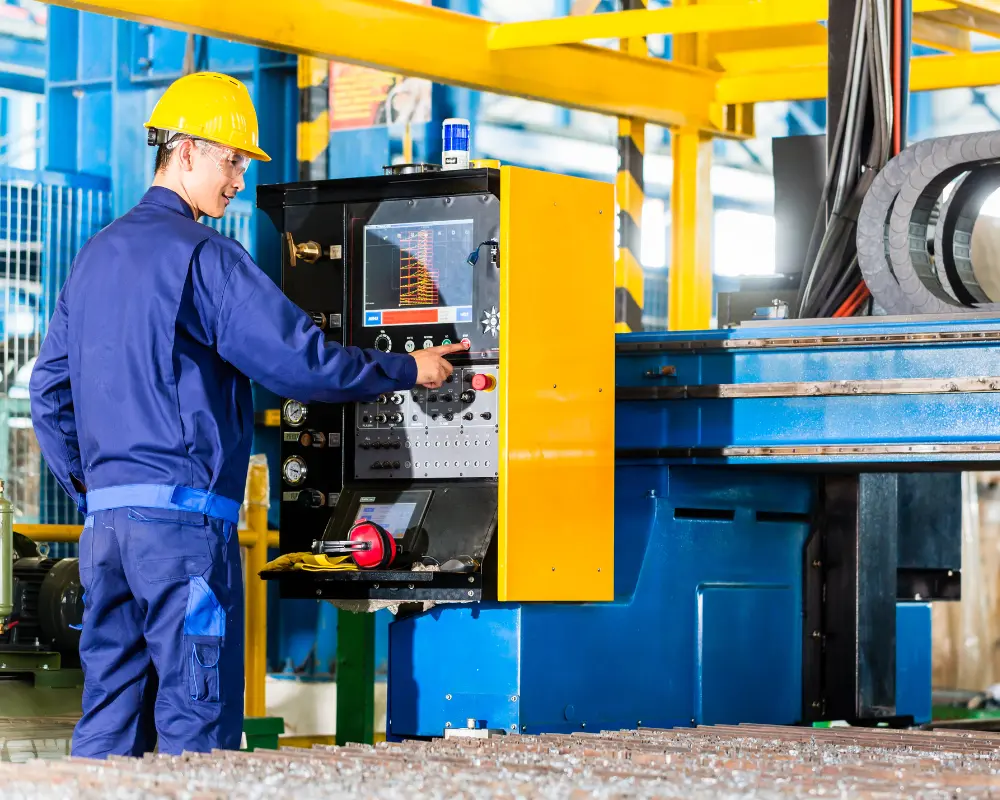Imagine you’re at work, and suddenly, one of your co-workers collapses due to heat exhaustion. Unfortunately, this type of incident is quite common and can put employees’ lives at risk while also disrupting productivity.
The above scenario highlights the urgent need for an effective Environmental, Health, and Safety (EHS) strategy. But how do you know if your current approach is sufficient, and what role can technology play in enhancing it?
The Rising Importance of EHS in Modern Workplaces
The rising importance of EHS comes from a collective understanding that a safe workplace is not a luxury but a necessity. The evolving work landscape, including diverse work environments, new chemicals and materials, and advanced machinery, further amplifies this realization.
Ethical considerations, such as corporate social responsibility (CSR), have also significantly influenced EHS’s growing focus. Companies now recognize that ensuring employee health and safety reflects positively on their brand and is crucial to employee retention and satisfaction.
Recent Trends and Statistics
Statistically, the urgency for robust EHS measures is evident. According to The Bureau of Labor Statistics, over 5,000 workers died on the job in 2021. BLS also reports that private industry employers reported almost 3 million nonfatal workplace injuries and illnesses in 2022.
Heat-related illnesses are particularly concerning and often underestimated in various industries. The increasing frequency of extreme weather conditions due to climate change exacerbates this issue, making it more critical than ever for businesses to adopt comprehensive EHS strategies that are both proactive and reactive. Each work environment presents its unique set of challenges.
With the undeniable significance of EHS now in focus, let’s shift our attention to how we can identify the specific EHS needs within our workplaces.
Identifying EHS Needs in Your Workplace
 A distinct set of risks characterizes each work environment. For example, the interplay between heavy machinery, chemicals, and human labor in a manufacturing plant creates a complex risk environment. Similarly, in the healthcare sector, workers are exposed to biohazards, ergonomic risks, and emotional stress.
A distinct set of risks characterizes each work environment. For example, the interplay between heavy machinery, chemicals, and human labor in a manufacturing plant creates a complex risk environment. Similarly, in the healthcare sector, workers are exposed to biohazards, ergonomic risks, and emotional stress.
Conducting a thorough risk assessment involves identifying these hazards and understanding the frequency and severity of potential incidents. This holistic approach ensures that all aspects of worker safety are considered, from physical hazards to ergonomic and psychological risks.
Assessing Your Current EHS Practices
Evaluating your current EHS practices is crucial. This involves reviewing accident reports, examining workplace processes, and engaging with employees to understand their safety concerns. Are safety drills conducted regularly? Is there a clear protocol for reporting hazards? How effectively are safety training and educational programs being implemented?
These questions help identify areas where your current safety measures are falling short. Additionally, benchmarking against industry best practices can provide insight into areas for improvement and innovation in your EHS strategies. After assessing our current EHS practices, the next step is to explore how modern solutions, like technology, can elevate our EHS strategies to new heights.
How Technology Enhances EHS
Technology integration into EHS has revolutionized its management, shifting the focus towards more predictive and preventive strategies. AI and machine learning are at the forefront of this transformation, analyzing large datasets to identify patterns and predict risks.
Drones represent another leap in technology for EHS. They are instrumental in hard-to-reach or hazardous areas, providing real-time surveillance without exposing human workers to risk.
Finally, the use of wearable sensors epitomizes the technological advancement in EHS. These sensors monitor workers’ vital signs, such as heart rate and body temperature, alerting them to potential health risks like heat stress or exhaustion.
Benefits of EHS Technologies
The advantages of adopting these technologies are numerous. Real-time data tracking allows for immediate response to potential hazards, drastically reducing emergency reaction time.
Predictive analytics are crucial in risk assessment, identifying potential safety breaches before they result in accidents or injuries. This enhances workplace safety and boosts employee morale, as workers feel more secure knowing that proactive measures are in place to protect their health and well-being.
Furthermore, these technologies allow for better compliance with regulatory requirements, enabling easy access to accurate data that demonstrates adherence to safety standards. However, companies will never achieve these benefits without first focusing on properly integrating EHS technology.
Integrating EHS Technology Solutions

The first step is establishing a clear EHS technology integration strategy and identifying specific safety goals. Are you looking to reduce workplace accidents, improve emergency response, or ensure regulatory compliance?
After setting these goals, evaluate how to utilize technology to achieve them. This may involve a gap analysis to identify the areas technology can impact most. It’s also important to consider the long-term vision of your EHS strategy and how the chosen technology will adapt to future changes and advancements.
Choosing the Right Technology
Selecting the right technology requires careful consideration of several factors:
- Usability: If a technology is too complex or unintuitive, the workforce may not adopt it effectively.
- Scalability: The technology should be able to grow with your business and adapt to changing needs.
- Integration: The new technology should seamlessly integrate with existing systems to ensure a smooth transition and avoid data silos.
- Cost-effectiveness: Affordability and ROI are always vital considerations for any business.
- Data Security: look for technologies that offer robust data security and privacy features, which are especially important in today’s digital age.
Implementation and Training
The success of any new technology depends heavily on its implementation and the training provided to the users. A phased implementation approach can be effective, starting with a pilot program to test the technology in a controlled environment. Feedback from this phase can guide the full-scale rollout.
Training is equally important. Employees should know how to use the new technology and understand its importance in their daily work. Continuous training and support are essential to ensure long-term adoption and effectiveness. With a strategy for integrating EHS technology now laid out, let’s examine how one company is helping businesses address these EHS needs.
How SlateSafety Addresses EHS Needs
SlateSafety stands at the cutting edge of safety technology, providing a holistic solution that blends real-time surveillance with insightful data analysis. Their product range, including the BAND V2 for vital sign monitoring and the BEACON V2 for environmental assessment, is crucial in preemptively ensuring workplace safety and addressing the risks of workplace heat.
Elevate your safety management with SlateSafety’s advanced tools. Shift to a smarter, more efficient approach and see the transformative impact in your workplace. Contact us today to join the movement towards a safer, stronger work environment.

